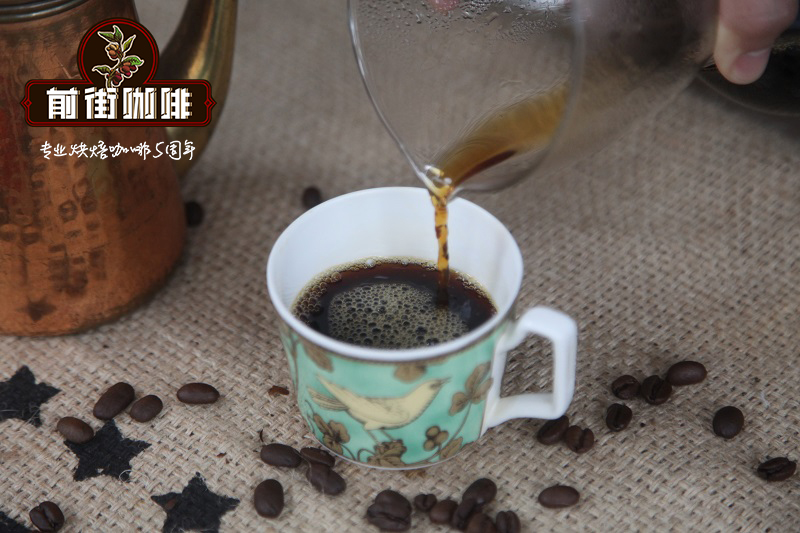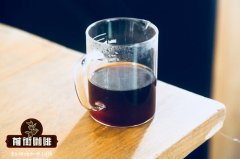The effect of coffee cups on the quality of coffee how many milliliters to buy coffee cups

Professional coffee knowledge exchange more coffee bean information please follow the coffee workshop (Wechat official account cafe_style)
Did you know that coffee cups can also affect the quality of coffee? To preserve the aroma, temperature and taste of coffee, the material and size of coffee cups are the key! This time, Qianjie Coffee will lead you to explore the knowledge of coffee cup material.
The material of the coffee cup
Coffee cups are made of a variety of materials, including stainless steel, paper cups, glass, plastic and ceramics. So how to choose the right coffee cup? The following four kinds of coffee cups, readers can choose the most suitable cup according to their own situation!
1. Stainless steel coffee cup
The stainless steel cup is easy to carry and is very suitable for travelers, but the disadvantage is that it is easy to dissolve toxins in an acidic environment. Stainless steel contains heavy metals and is highly stable in general drinks, but it will stimulate its activity in acidic drinks and release it in beverages, causing safety concerns, so it is not recommended as a coffee container. In addition, its heat preservation effect is not good, which can easily lead to the loss of coffee temperature and aroma.
two。 Paper coffee cup
Paper cups are disposable products that are often seen at large events or meetings. Save the trouble of cleaning, but can not have good thermal insulation. In addition, security concerns are also a big problem. Black-hearted products with bleach and talcum powder in paper cups have been heard from time to time, and the heat-proof plastic material coated may also dissolve toxins, so it is easy for people to taste a cup of poisonous coffee unwittingly! Therefore, if you use paper coffee cups, please try to choose certified, heat-resistant, high-quality printing ink cups to reduce the risk of drinking poison.
3. Glass coffee cup
The glass is made with almost no chemicals in the manufacturing process, so it is the safest and the user can feel at ease to use it. Unfortunately, the heat resistance and heat preservation of the glass cup is not as good as that of the ceramic coffee cup, and it is more appropriate to use iced coffee.
4. Ceramic coffee cup
Ceramic cups have a variety of styles, safe materials, high temperature resistance and good heat preservation, so they are the best choice for tasting coffee. But the disadvantage is that colored ceramic cups are often coated with glaze, which will dissolve toxins when filled with drinks, causing health damage. It is recommended to use white ceramic cups, which is not only safe, but also can fully present the flavor of coffee.
As mentioned earlier, ceramic cups are the most suitable containers for hot coffee if allowed!
Second only to the heat resistance and heat preservation of ceramic cups, the glass is also a good choice. Avoid choosing stainless steel cups and paper cups without safety protection, so as not to dissipate the aroma of coffee or drink the toxins melted in the cup!
The size of the coffee cup
In order to make drinking coffee more elegant, not only the material is exquisite, the size is also a very important consideration. Below we will coffee cup size is divided into three, choose the right size of the cup, so that you not only drink well, but also drink skillfully!
1. Small coffee cup
Equipped with a capacity of 60Mel 80ml, it is suitable for Italian espresso or individual coffee. Its rich, mellow flavor and small taste can best extend the aftertaste of coffee in the mouth.
two。 Regular coffee cup
With a capacity of 120ml, it is the coffee cup with the highest utilization rate. Because there is enough space, it is suitable to pack black coffee and mix the ratio of sugar and milk.
3. Mug
With a capacity of more than 300ml, it is suitable for latte or iced coffee, so that people who want to drink a large cup of coffee can get the greatest satisfaction.
Suitable material, retain flavor; suitable size, present aesthetic feeling
Coffee, like people, must be both internal and external. With a proper container, it is bound to keep the aroma of coffee in the cup for a long time. However, whether a cup of coffee is delicious or not lies in the care and neglect of every detail. It can be said that "the devil is hidden in the details".
Important Notice :
前街咖啡 FrontStreet Coffee has moved to new addredd:
FrontStreet Coffee Address: 315,Donghua East Road,GuangZhou
Tel:020 38364473
- Prev

What's the difference between different hand pots? What are their advantages and disadvantages?
For the exchange of professional baristas, please pay attention to the coffee workshop (Wechat official account cafe_style) individual coffee is becoming more and more popular in the market, and the utensils for making individual coffee are also dazzling, among which hand pots emerge one after another one after another. for baristas who have just entered the coffee industry or those who like to drink coffee, they may be dazzled to see all kinds of hand pots on the market.
- Next

What is ECX? Why is it that sometimes the drink of Yega Chefe doesn't have the classic flavor of Yega Chefe?
Professional coffee knowledge exchange more information on coffee beans please follow the coffee workshop (Wechat official account cafe_style) Yegashafi coffee beans, the earliest definition is produced in Ethiopia, a coffee bean called the town of Yegashefi. Most coffee fans may be no stranger to Ethiopia, which is the birthplace of Arabica and the most important native / wild in the world
Related
- Beginners will see the "Coffee pull flower" guide!
- What is the difference between ice blog purified milk and ordinary milk coffee?
- Why is the Philippines the largest producer of crops in Liberia?
- For coffee extraction, should the fine powder be retained?
- How does extracted espresso fill pressed powder? How much strength does it take to press the powder?
- How to make jasmine cold extract coffee? Is the jasmine + latte good?
- Will this little toy really make the coffee taste better? How does Lily Drip affect coffee extraction?
- Will the action of slapping the filter cup also affect coffee extraction?
- What's the difference between powder-to-water ratio and powder-to-liquid ratio?
- What is the Ethiopian local species? What does it have to do with Heirloom native species?

